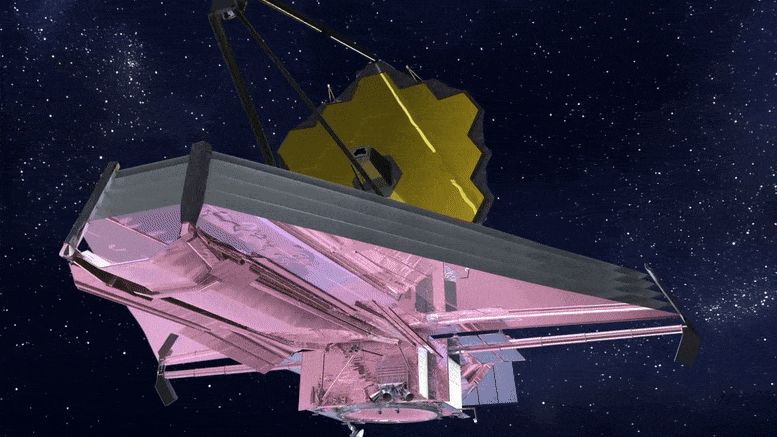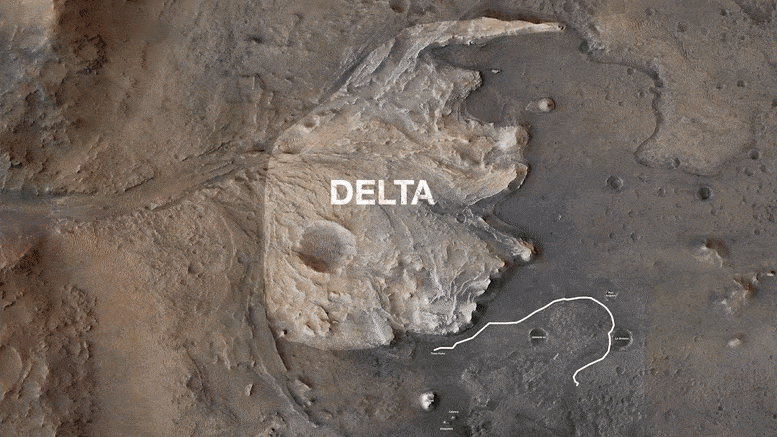Kosmiczny Teleskop Jamesa Webba należący do NASA. Źródło: NASA Goddard Space Flight Center i Northrop Grumman
Po wielu niepowodzeniach, 20 latach rozwoju, oszałamiającym koszcie 10 miliardów dolarów i niebezpiecznej podróży w kosmos na odległość miliona mil (1,5 miliona km) nowy samochód[{” attribute=””>James Webb Space Telescope (JWST) finally opened its golden, infrared eye and gave us a glimpse of our universe – and its unfathomable past – in stunning, unprecedented detail. To honor this feat, the journal Science has named JWST’s flight as its 2022 breakthrough of the year.
Unhindered by the Earth’s atmosphere, space telescopes provide an unspoiled view of our surrounding universe. However, unlike its predecessor, the Hubble Space telescope, JWST can capture infrared light, including light emitted from the very first stars and galaxies to wink into existence. Within days of coming online in late June 2022, researchers began discovering thousands of new galaxies more distant and ancient than any previously documented – some perhaps more than 150 million years older than the oldest identified by Hubble. What’s more, the telescopes is capable of collecting enough light from astronomical objects – ranging from birthing stars to exoplanets – to reveal what they are made of and how they are moving through space. This data has already begun to reveal the atmospheric composition of planets hundreds of light-years from Earth in great detail, offering hints as to their ability to potentially support life as we know it.
Nie wiemy jeszcze, co ujawni Kosmiczny Teleskop Jamesa Webba. Czy uzyskamy odpowiedzi? Czy będziemy mieli więcej pytań? Jedno jest pewne: nasza historia to niekończące się poszukiwanie wiedzy. Jak powiedział Carl Sagan: „Nic na to nie poradzimy”. przypisano mu:[{” attribute=””>NASA
Runners-up for the Breakthrough of the Year include the discovery of a massive microbe nearly 5,000 times bigger than many other bacterial cells; the development of a perennial rice variety; new insights into how the Black Death altered the genes of Europeans; an ancient ecosystem reconstructed from 2-million-year-old environmental DNA preserved in Greenland permafrost; advancements in an RSV vaccine; NASA’s successful DART satellite mission; the passing of landmark climate law; rapid development of creative AI; and the identification of the virus that may cause multiple sclerosis.
Now that the Science news and editorial staff have selected the 2022 Breakthrough, a committee of approximately ten individuals – convened by the Science journals’ editor-in-chief, Holden Thorpe – will select up to three winners whose work best exemplifies the related research field to receive the first inaugural Bhaumik Breakthrough of the Year Award. The individual winner or winners will be announced before the end of March.
Webb to kolejne po Hubble’u wielkie kosmiczne obserwatorium naukowe, zaprojektowane w celu udzielania odpowiedzi na nierozstrzygnięte pytania dotyczące wszechświata i dokonywania przełomowych odkryć we wszystkich dziedzinach astronomii. Webb przyjrzy się bliżej naszym początkom – od formowania się gwiazd i planet, po narodziny pierwszych galaktyk we wczesnym wszechświecie. Webb to międzynarodowe partnerstwo między NASA, Europejską Agencją Kosmiczną i Kanadyjską Agencją Kosmiczną (CSA). Źródło: laboratorium medialne ESA/ATG

„Analityk. Nieuleczalny nerd z bekonu. Przedsiębiorca. Oddany pisarz. Wielokrotnie nagradzany alkoholowy ninja. Subtelnie czarujący czytelnik.”



